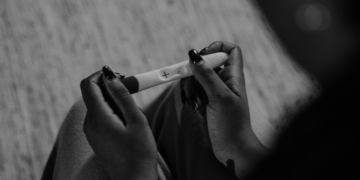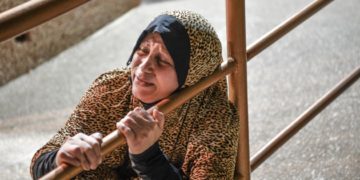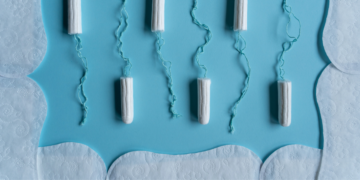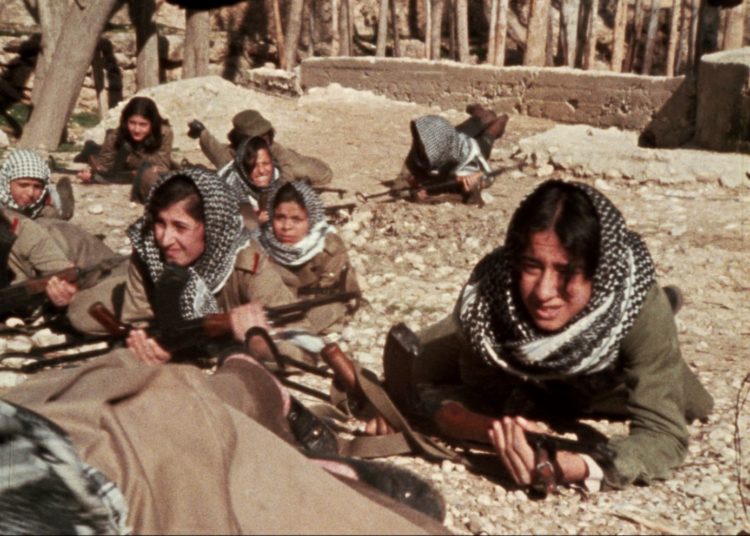This post is also available in: Français (French) العربية (Arabic)
“These are my children. This is my house. There’s water everywhere.”
This is how a woman residing in Hay Al-Tanak, one of the most impoverished neighborhoods in Tripoli, northern Lebanon, summed up her living situation and that of her family in the wake of the storm that hit Lebanon and caused severe damage to infrastructure and roads. The storm even made its way inside many houses across Lebanon, but especially in Tripoli and Akkar, both areas that already suffer from the absence of the state, poverty, poor living conditions, and a lack of services.
Zahraa, a mother of six, is the breadwinner in her family. She works cleaning houses to feed her children and provide them with as decent a life as possible. “We’re getting by in this house, but whenever a storm comes, it takes us with it,” she says with great distress, carrying in her hands her children’s wet clothes and books, all drenched from the floods.
The floodwater rolled into this fifty-something-year-old woman’s house, which even before the flood was unfit for habitation. The roof is made of tin, and the walls are barely holding together. Now with water flowing into her children’s bedroom, Zahraa says she can’t take it anymore—“the poverty, the hardship, the storms!”
Many homes were flooded and suffered material damage. Some people even drowned. The storm brought with it further confirmation of how deeply the country has collapsed.
Not far from Tripoli, in Abda-Akkar, we met a mother of four who now lives in a Syrian refugee camp with her children after her husband passed away. Ahlam works in agriculture to provide for her family. She explains with great distress what unfolded during the days-long storm. “We saw the agricultural lands drowning in the floods, so many crops went to waste, and yet no one showed any compassion for the situation people now find themselves in.” When we asked her about the situation in the camps, she said, “It’s become our new normal: winter comes, and we drown in our tents with our children. Every year, my children get sick because of the flooding in the camp. It’s very difficult to get any sort of heating, and when you live in a tent, it gets really cold. I collect some sticks, some firewood, some paper I find thrown on the roads or in front of garbage bins, and I light them up inside the tent in a brazier so we don’t die from the cold. As difficult as that is, I have no other option.”
Zahraa and Ahlam’s suffering brought about by the heavy winter storm is the suffering of many others, too, especially the mothers who are also their family’s breadwinners. They have to take care of their families under difficult circumstances and in the absence of official social care or assistance. When a storm hits, be it this one or others, infrastructure is destroyed, houses are flooded, sewers are clogged, and roads crack—and these are not one-time issues. They are weather repercussions that continue to impact people’s lives, and those affected receive no compensation or assistance, even though many of the impacted are unable to help themselves because of the difficult financial and living conditions and the economic crisis, which has significantly affected the most impoverished families and people with limited income.
“I collect some sticks, some firewood, some paper I find thrown on the roads or in front of garbage bins, and I light them up inside the tent in a brazier so we don’t die from the cold.”
Some of the people we met while going around the area told us that entire families were forced to leave their places of residence because of the floods and their impact on children, the elderly, and people’s houses and tents. One can only begin to imagine the hardship these families have endured, especially those in impoverished areas that already suffer from deteriorating infrastructure and the absence of state care—and the absence of the state itself.
According to the United Nations Population Fund (UNFPA), women and girls are the most vulnerable to and the most affected by disasters, as they constitute the majority of the world’s populations living in poverty and often carry the vital burden of procuring food, water, and other necessary supplies for their families.
Statistics for 2022 presented in a press interview by Mohammad Shams, a researcher at Information International, reveal that the wealthy class in Lebanon constitutes 5% of the population, while the middle class constitutes 40%, down from 70%. Those living above the poverty line make up 30% of the population, while 25% live below the poverty line.
All in all, this latest storm and all those that preceded it, this year specifically, have proven that Lebanon is unable to withstand a typical winter storm, and that the most vulnerable groups—people living in poverty, women, and refugees—are the ones who suffer from the deteriorating infrastructure and the absence of frameworks for social and economic welfare.































